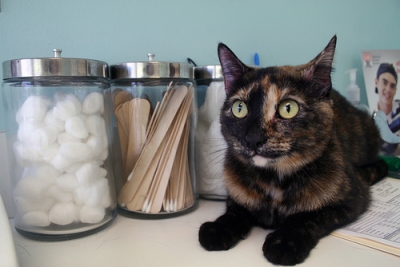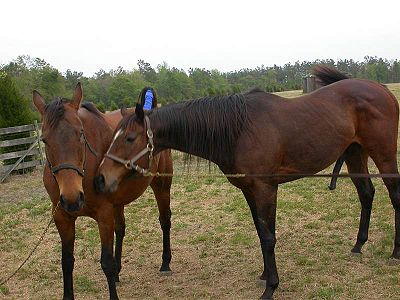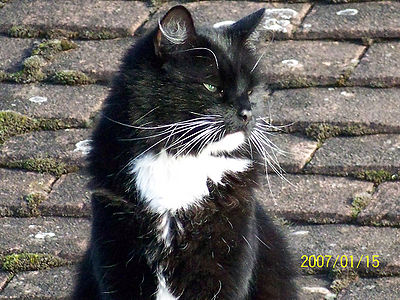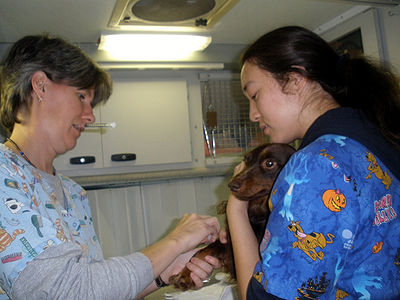
Upper Respiratory Infections (URIs) are more common complaints for cats in shelters or those that live or allowed outdoors. Cats are affected by URIs more than dogs because of their flatter faces (difficulty breathing), especially breeds like Persians. Kittens, because of their immature immune systems, are most at risk.
There are 2 viruses that are the main contributors to URIs: rhinotracheitis (a herpes virus) and calici virus. Bacteria causing URIs are chlamydia psitacci and Bordatella. Bordatella (kennel cough) is usually seen in dogs, but ongoing research shows that it can cause the illness in cats.
The disease is usually spread by a sick cat who is sneezing, has runny eyes and drools. People handling sick cats or their equipment ie: toys, feeding dishes, bedding, can spread URIs through their clothing or the objects they touch. Some cats can be carriers even after they have recovered from the disease.
Symptoms with herpes are usually sneezing, eye and nasal discharges, drooling, fever, inappetance.
Calici symptoms are lameness and mouth ulcers along with milder herpes symptoms.
Chlamydia has mild sneezing with acute eye infection.
Bordatella is thought to cause similar symptoms as herpes along with enlarged lymph nodes and coughing.
Your veterinarian can diagnose by the appearance of the symptoms, but will sometimes send cultures of mouth, nose and eye discharges to the laboratory for verification.
You can keep eyes and nose clear by gently wiping away any discharge using a warm clean cloth each time or cotton or cotton balls. Keep the cat in an area without drafts and that is warm.
Suffy noses mean cats can’t smell their food and may refuse to eat. You can tempt your cat with foods that have strong smells. Make sure your cat does not become dehydrated by not drinking water. If your cat refuses all food and is not drinking, it’s very important to bring him/her to your veterinarian.
Antibiotics in the tetracycline family have been found to be the most effective against URIs. They are prescribed even for viral URIs in order to prevent secondary infections. Your vet may also recommend eye drops and in some cases, nose drops.
Most of these cat “colds” usually clear within 7-10 days, but can recur.
In any case, you should always consult your veterinarian before treating your cat.



